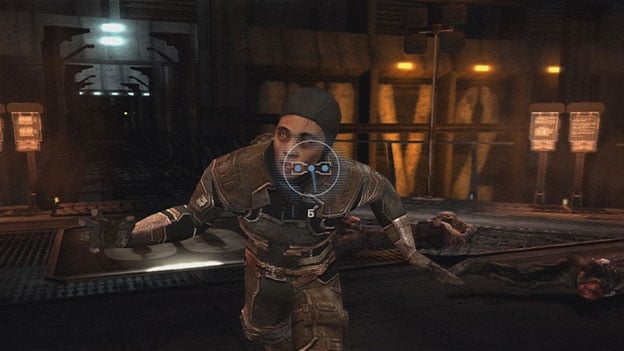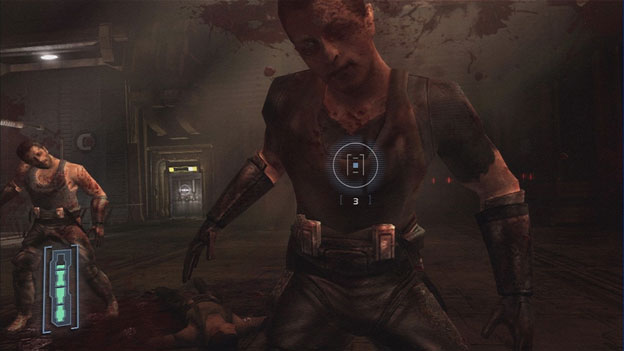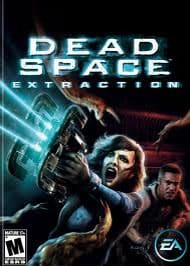Where It All Began
When Wii-exclusive Extraction first hit Nintendo’s system back in 2009, much of Dead Space’s mythology was still shrouded in mystery. Despite a straight-to-video prequel (showing Ishimura before the events of the original game), a comic mini-series (detailing the fall of Aegis VII), and Isaac Clarke’s traumatizing journey through hell on board the ship itself, the narrative motivations of Unitology (and moreover why the church wanted the Marker in the first place) weren’t revealed yet. Now it’s 2011, Dead Space 2 has just come out and some details have been revealed—though not as many as you might think. Nevertheless, since Visceral has seen fit to re-release Extraction with Dead Space 2 and on PSN—complete with a slick new HD overhaul and Move compatibility—it’s worth revisiting this early chapter in the series mythos, both from a technical standpoint as well as from a narrative one.

If you couldn’t already tell from the screens here (or just didn’t play Extraction for whatever reason), this isn’t a survival horror game, but a light-gun shooter. (At the time of its development Visceral said they had built Extraction from the ground up to make use of the Wii’s motion-sensing abilities, so a first-person perspective makes some sense.) Obviously, Extraction’s design is equally as different, then, focusing on the intensity of combat (now somewhat retroactively reminiscent of Dead Space 2’s combat design) rather than scares. Still, this is Dead Space— some scary parts are to be expected, even when the game is on-rails. Right? That depends on whether or not you’ve already played Extraction.
It’s not that the game doesn’t try. There are certainly some nail-biting events just by force of sheer numbers of enemies. But the nature of an on-rails game doesn’t lend itself well to the kind of suspense and fear that the other games in the series do so well. Even with somewhat randomized enemy placement, the camera is generally pointing you in the right direction so it’s less a question of where the necromorphs are and more one of whether or not you can kill them all before they kill you. It’s still a stressful experience (or at least it will be for someone who hasn’t played Extraction before), and for fans of the series, an entertaining one.

The narrative skews towards a different feel than the core games in the series, as well. The game initially takes place on Aegis VII, showing the immediate results of the Marker’s excavation before four survivors escape to what they think is safety on the Ishimura. Although you spend most of the game playing as Nathan McNeill, a detective who was stationed on Aegis VII, later in the game the perspective shifts a few times to accommodate other characters, an interesting choice which I suspect was made to keep the script’s events from feeling too homogenous.
Unlike the original Dead Space, which gave some context to what are obviously now Visceral’s grander narrative intentions, Extraction’s cast talks to each quite a bit. McNeill and the others try to cope with their worsening situation, sometimes comforting each other, sometimes fighting amongst themselves. It gives Extraction the feeling of a horror film with the typical band of survivors, and, much like the tonal change in design, it’s gives the impression that you’re waiting to see who’s going to get picked off, and how, rather than seeing how everyone makes it. The next necromorph encounter is never far at hand, either, but thankfully Extraction’s script doesn’t succumb to too much of the expected—and actually has one of the most interesting moments in the whole series—unlike, say, the predictable script in a typified zombie film.

Yet despite Extraction’s differences from the core games in the series, it still very much plays like Dead Space. Although Visceral pulls the occasional feint on you, all the expected enemies and weapon types are present and accounted for (along with a couple of new ones), as is stasis and kinesis, the latter of which is used to grab ammo, health, memos, and power-ups (substitutions for Isaac’s workbenches hidden throughout each level).

Extraction also has some clever ideas that aren’t even seen in Dead Space 2: for starters, some levels have branching paths, which gives Extraction some added replay value, as well as some ingenious scenes where your only light source is a glow worm, a small rechargeable light source (occasionally found in the periphery of Isaac’s latest outing) that must be shaken in order to maintain its luminosity. You can also see the origins of Isaac’s hacking in Dead Space 2, although Extraction’s scenarios are a little more nerve-racking, with enemies attacking you as you work.
On the basis of technical performance, the PS3’s edition of Extraction is clearly the superior version. The game already looked great on the Wii, and though this is just a touch-up job similar to Danger Close’s re-release of Medal of Honor Frontline, the graphics capabilities of the Wii make it a far better game to see get the HD treatment than an antiquated FPS that came out in 2002. With its new lick of paint, Extraction looks crisp and runs smoothly, with well-detailed character and enemy models, particle effects and fantastic lighting. The Move compatibility seems to have helped the game, as well. With the additional buttons provided by Sony’s motion controller, there’s no need for a Nunchuk, as in the Wii version. Though the button placement takes a little bit of getting used to (and you have to cycle through your weapon slots rather than picking them from the Wii Nunchuk’s analog stick) once you have it down it becomes clear that the responsive motion control of the Move is better suited to the Extraction’s gameplay.
After Dead Space 2, it might seem like a step backward to jump back into a port of a two-year old game, but it’s interesting to see the little nods to other games in the series here. Characters seeing visions from the Marker, mentions of the Sprawl, a brief appearance from Isaac’s girlfriend, Nicole, hints of the greater Dead Space narrative—Extraction still fits in pretty well to Dead Space’s ever-widening universe, and fans will enjoy seeing the game’s various points of reference. Chances are a lot of fans already got the game with the PS3’s first run of Dead Space 2, but even on PSN, it’s worth the asking price—though perhaps not if you don’t have a Move. Extraction is still worthwhile, though, and since you can get it for about the same price as the graphically-inferior Wii version, fans of the series would do well to pick it up.
RATING OUT OF 5 RATING DESCRIPTION 4.2 Graphics
Extraction’s Upgraded HD visuals from the Wii still hold up, and look pretty good, if sometimes lacking a little in detail. 4.5 Control
The Move’s control scheme is perfect for a light-gun game like this one. The button layout may initially take a little getting used to, however. 4.8 Music / Sound FX / Voice Acting
It’s a good thing the voice work here is top-notch, because there’s a lot of it. Other than that, expect the usual Dead Space sounds and music. 4.4 Play Value
Extraction is still pretty fun, and with the improved controls it’s the best version. 4.4 Overall Rating – Great
Not an average. See Rating legend below for a final score breakdown.
| Review Rating Legend | |||
|---|---|---|---|
| 0.1 – 1.9 = Avoid | 2.5 – 2.9 = Average | 3.5 – 3.9 = Good | 4.5 – 4.9 = Must Buy |
| 2.0 – 2.4 = Poor | 3.0 – 3.4 = Fair | 4.0 – 4.4 = Great | 5.0 = The Best |
Game Features:
